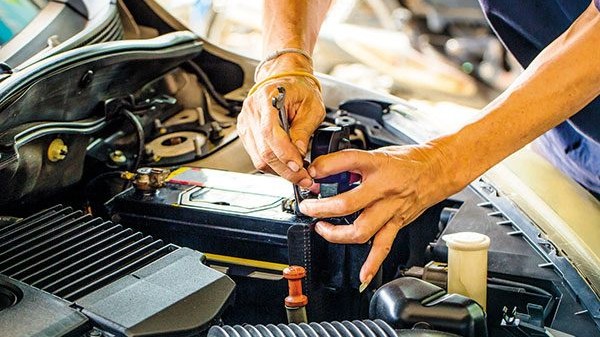UNDERSTANDING YOUR BATTERY

Batteries are not simply a storage container for electrical energy by way of a simple chemical reaction – there’s much more to know about them. We spoke to the team at TWL, New Zealand’s leading supplier of transport after-market parts and accessories and suppliers of Exide Batteries, to learn more.
An automotive battery has two main functions: to provide starting power for the engine and to run accessories such as lights, fans and radio when the engine is not running. They’re not a component you generally think of until they fail, but there is plenty you can do to look after them and prolong their useable life.
A battery’s life depends on many things. A truck battery can last up to four years or 100,000km if looked after. Each battery is labelled with a date code for easy reference. The letter indicates the month of the year, starting with A for January, and the number indicates the year. So B1 would mean the battery was sold to the reseller in February 2021.
“This date is usually the date the battery was put on the shelf, and the teams at Exide and TWL use this to make sure when you buy an Exide battery from TWL it is fresh and in tip-top condition,” says national sales manager Stephen Sylvester.
“If you check the date sticker on the batteries in your rig and you can see it’s getting old, it’s recommended you replace them before they let you down.”

Truck batteries are exposed to many variables that can impact their life. As far as trucking is concerned, the least likely scenario is taking short trips, which may not give the battery enough time to recharge between starts fully. More likely to shorten a truck battery’s life are:
• Vibration is one of the most common contributors to premature battery failure in the heavy-transport sector. Ensure the battery is always secured correctly to the vehicle, and if any modifications are done to the truck, the battery is located close to the chassis rail. Placing a rubber mat under the batteries also helps.
• Alternator over- or under-charging will cause premature battery failure in any application. If the battery light is displayed on your dash, this means the alternator is not working correctly – have your vehicle checked by an authorised repairer.
• Extreme hot or cold temperatures can shorten a battery’s life. TWL’s Exide batteries are designed for New Zealand conditions, but it pays to be aware of this if you operate in areas affected by extreme weather. If so, consider replacing your batteries a little earlier to avoid a starting issue.
• Terminal corrosion affects the battery’s connection with the charging system and has a similar effect to a faulty alternator. Regularly inspect and brush the terminals clean with a mix of hot water and baking soda to remove corrosion. Then cover with dielectric grease to insulate the terminals. Always keep the top of the battery clean from oil and grease as this can cause it to self-conduct and reduce its state of charge.
• Leaving any automotive battery in a discharged condition for long periods will cause sulphation, the leading cause of battery failure. Invest in an automotive battery charger that will maintain an optimum charge level when your vehicle is not in use for a week or longer. Always recharge your battery fully as soon as possible.
The most common cause of a good battery self- discharging overnight is when a light or power accessory is left on or keys are left in the ignition. Batteries can also drain overnight if there are faulty electrical components or wiring in the vehicle. According to TWL, you should replace a battery as soon as it shows any signs of reduced cranking performance.
When choosing a new battery, be sure to note the Cold Crank Amps (CCA) rating, which indicates the power a battery produces to start your vehicle’s engine in cold conditions.
The New Zealand standard is SAE, which is rated at -18° C. “Always choose a battery that is at least equal to the rating of the original equipment battery fitted to your vehicle when first manufactured,” says Sylvester.
Batteries are also made physically different to fit different vehicles. Therefore, ensure you select a battery with the correct physical dimensions and battery post configuration for your vehicle.
You can return old batteries to TWL for recycling in a safe and environmentally friendly process. Automotive lead-acid batteries are up to 98% recyclable.
DOS AND DON’TS
• Do use correct lifting procedures when moving batteries.
• Do not place metal objects on top of the battery.
• Do not allow sparks or naked flames near any battery.
• Do not smoke cigarettes when removing or installing a battery.
• Do wear safety glasses when removing or installing a battery.
• Do remove the negative cable first when removing a battery.
• Do replace the negative cable last when installing a battery.
Read more
Wide load follows
0 Comments9 Minutes
Lined up and in Balance
0 Comments8 Minutes
MIDGET ON A MISSION
0 Comments16 Minutes
Looking outside the bubble
0 Comments5 Minutes





